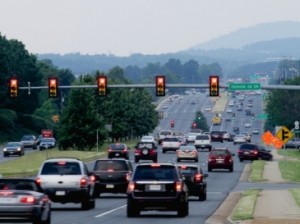by James A. Bacon
Last week the Virginia Department of Transportation (VDOT) opened bids for the design and construction of the Charlottesville Bypass, claiming that the low bid of Virginia Beach-based Skanska-Branch/JMT came in beneath the department’s official projection and within the $197 million allocated to the project. However, project foes stated that, based upon the evidence available to them, the low bid appeared to be over the limit. (See previous post.)
Additional information provided by VDOT officials strengthens the case that the Skanska bid did come in below the official estimate. Assuming Skanska meets VDOT’s criteria as a qualified contractor — it has sufficient bonding capacity, it meets disadvantaged enterprise goals, etc. — there appears to be no substantial barrier for the controversial project to proceed.
The total cost of the project, including money spent on engineering and right-of-way, was estimated to be $244.5 million. Of that amount, VDOT had set aside $125.6 million for additional engineering and construction. Skanska’s bid was $136 million, or seemingly $10 million higher. How could VDOT say that the project came under bid?
Because the new project design slashed Right of Way costs, says Jim Utterback, Culpeper district administrator. Instead of spending $71 million to acquire additional ROW, the state will have to spend only $35.4 million — a difference of almost $36 million. The original design called for elaborate flyovers crossing U.S. 29 at the northern terminus. The revised design eliminates the flyovers, sparing the necessity of acquiring land east of the highway. The revised design also reaped smaller savings in land acquisition at the southern terminus, he said.
Does that mean the final cost will come in $25 million under estimate? Probably not, says Utterback. VDOT has to set aside a contigency fund, and it will have to absorb Construction and Engineering Inspection costs. He anticipates that the available funds will cover those administrative costs.
Despite questions regarding expenditures such as landscaping and noise abatement, Jeff Werner, Albemarle and Charlottesville land use officer for the Piedmont Environmental Council, conceded that the project appears to come in under budget. He is baffled by how it’s possible for Skanska to slash out so many of the costs identified by VDOT staff but not incorporated into the original cost estimate, and he would like to dig into the accounting. But as long as Skanska does what it says it will, he said, he has no grounds to object to the bid.
The big question now is this: What trade-offs did Skanska make in its proposed design and how will they effect the bypass performance? In the original design, the Bypass would shave 2 1/2 to 3 minutes in driving time. But the substitution of a stop light or tighter curves for flyovers, and a steeper slope over Stillhouse Mountain to reduce excavation costs, could diminish the time savings and degrade the project’s economic Return on Investment.
Opponents also say that by the time the Skanska design is made public, there will be no public hearings or any other opportunities for the public to critique the alterations from previous incarnations of the design.



